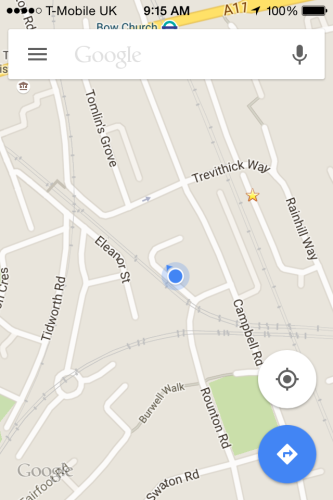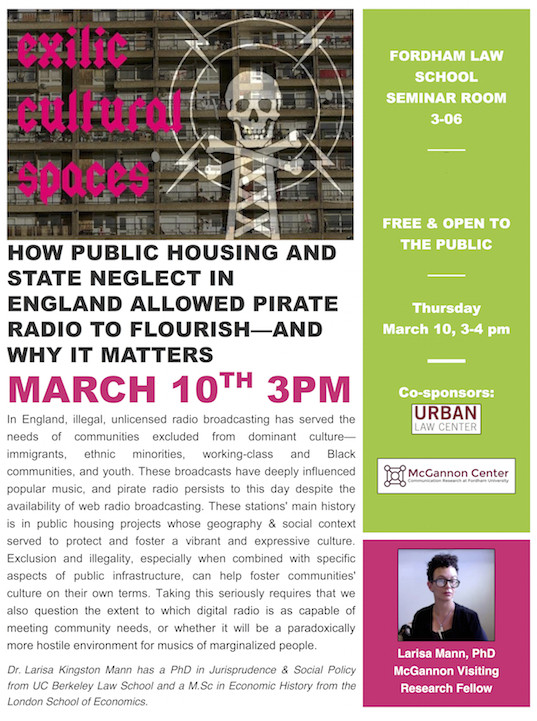In my capacity both as Dj Ripley and as Dr. Larisa Kingston Mann, I’m speaking at Fordham Law School next week, sponsored by the McGannon Center for Communication Research (where I’m a Fellow), and the Urban Law Center.
I’ll be speaking about my research and experience with UK pirate radio (Pirate radio is radio that broadcasts illegally – without a license), the still-beating (if mutating) heart of English dance music and subculture. I’m focusing on the broadcasters who picked up steam in the 1980s and 90s in the UK, although the roots are older, I’m interested in the cultural force that came out of that particular era. Last summer I was able to interview some greats in the pirate radio scene, notably Uncle Dugs who kindly met with me after one of his blistering jungle sets on the now non-pirate and online Rinse FM -during which he coincidentally played the first jungle record I ever bought! I am combining these stories with some of the concerns of the UK housing rights movement fighting for a home as a right not a privilege.  It’s an interesting combination – demands for state investment in housing but also autonomous and perhaps necessarily illegal practices going on inside.
There are heaps of documentaries, news bits & articles about pirate radio (although strangely little scholarly work), and even a pretty hilarious BBC mockumentary. But one of the best and most inspiring pieces for me was this one published in the mighty DATACIDE magazine, put out by the Praxis label I know from my days crossing through  the breakcore worlds. Alexis’ Wolton’s “Tortugan Tower Blocks: Pirate signals from the margins”
I was already interested in the way the architecture and urban design helped to focus and shape pirate radio content through shaping who had access to the spaces. Check the map down below that shows how a pretty distinctive street layout around some public housing in London I spent some time in. Wolton’s piece inspired me to revisit how that came about and talking to people about how it actually worked in practice. Some good old fashioned social history was the next logical step, combined with some insights I had from my previous research on illegal cultural spaces and Jamaican dancehall.
So come through on March 10 and help me make it a conversation!
Also shout out the Back to Life parties in NY for projecting images of public housing and  providing the soundtrack and physical inspiration to get this going again, bringing all this bubbling up to a garage soundtrack on the dancefloor (and Dj Khalil for absolutely murdering it last time)!


